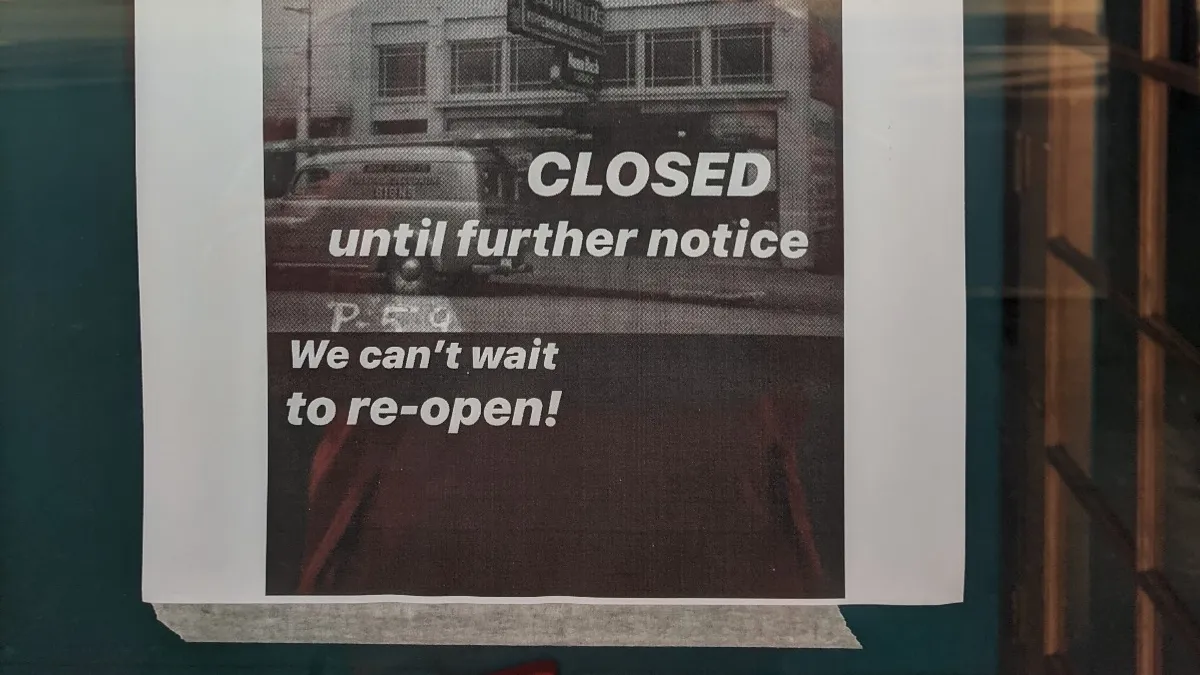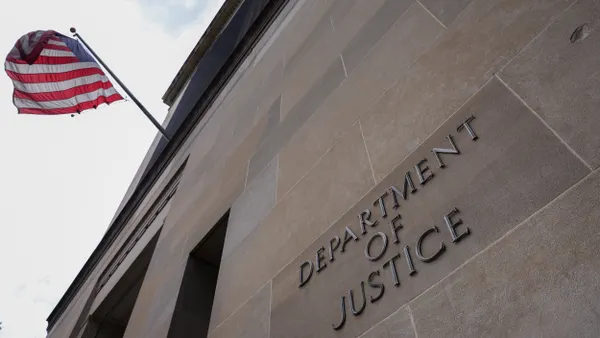Dive Brief:
- Nevada saw the largest unemployment rate increase of any state (2.7%) in March compared to February rates, according to new unemployment data released Friday by the U.S Bureau of Labor Statistics (BLS).
- The BLS found "statistically significant unemployment rate changes" from February to March in 32 states and the District of Columbia, with an average jump of 1%. Eighteen states had rates that were not notably different from February. In an analysis of unemployment data from March 2019 to March 2020, Louisiana saw the largest rate increase (2.4%) with Nevada trailing closely behind (2.2%).
- The BLS notes that two federal-state cooperative surveys were used to determine the unemployment data — the Local Area Unemployment Statistics program (LAUS) and the Current Employment Statistics program (CES) — yet the reference periods for both surveys "predated many coronavirus-related business and school closures in the second half of the month."
Dive Insight:
The national unemployment rate rose to 4.4% in March 2020, compared to 3.8% in March 2019, according to the BLS. While this increase is notable, it does not account for a significant period of time under which cities and states have imposed stay-at-home orders to grapple with the novel coronavirus pandemic.
"We cannot precisely quantify the effects of the pandemic on state and local job markets in March," the BLS wrote. "However, it is clear that the decreases in employment and hours and the increases in unemployment can be ascribed to effects of the illness and efforts to contain the virus."
Next month's report from the BLS will likely indicate a significant spike in these unemployment rates. Since mid-March, nearly 13% of the U.S. labor force has sought unemployment assistance, according to the Wall Street Journal. The U.S. Department of Labor registered a record-breaking 22 million initial unemployment claims as of April 16, with most layoffs occurring in the food services, retail trade, information, healthcare and social assistance industries.
Local governments have taken unprecedented measures to curb the consequences of this unemployment trend, most commonly through relief funds and campaigns to support various restaurants, entertainment venues and other small businesses. Federally, the Coronavirus Aid, Relief, and Economic Security (CARES) Act detailed $2 trillion in relief funding and implemented a Paycheck Protection Program under the U.S. Small Business Administration (SBA), but funding for that program ran out this week following more than 1.6 million loan applications totaling more than $339 billion.
Many nonprofits and think tanks have developed platforms for governments to better asses the economic impact of coronavirus on a state- and local-level. The Washington, DC-based Urban Institute released a mapping tool (below) to compare the trajectory of unemployment rates across public and private sectors.
Cities are also grappling with their own internal furloughs and layoffs. On a recent press call hosted by the National League of Cities and U.S. Conference of Mayors, a number of local leaders detailed staffing woes, noting that many city employees who depend on income taxes for their salaries have lost their jobs.
To keep up with all of our coverage on how the new coronavirus is impacting U.S. cities, visit our daily tracker.












